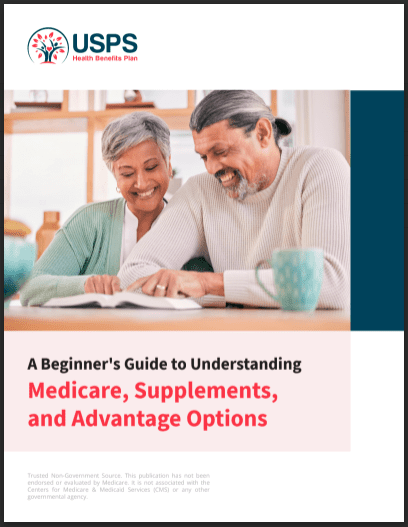Key Takeaways
-
Missing or ignoring key PSHB deadlines in 2025 could result in loss of coverage, increased costs, or limited access to benefits.
-
Understanding which dates apply to you—whether you’re a USPS employee, retiree, or family member—can help you make informed decisions about your health coverage.
What Changed in 2025: Understanding the Shift to PSHB
In 2025, the U.S. Postal Service transitioned from the Federal Employees Health Benefits (FEHB) Program to the Postal Service Health Benefits (PSHB) Program. This change, mandated by the Postal Service Reform Act of 2022, is now fully implemented. It affects current employees, annuitants, and eligible family members. Your coverage, costs, and obligations all depend on how well you understand the new system—and its deadlines.
The PSHB Program, administered by the Office of Personnel Management (OPM), runs parallel to FEHB but is specifically designed for USPS workers and retirees. If you are an annuitant or a current employee, certain dates in 2025 could change your coverage—for better or worse.
1. The Open Season Period: November to December
The PSHB Open Season occurs annually, typically from mid-November to mid-December. In 2025, this window allows you to:
-
Enroll in a PSHB plan
-
Change your existing PSHB coverage
-
Add or remove eligible family members
Why it matters: If you miss this window, you can’t make changes until the next Open Season—unless you experience a qualifying life event (QLE). You risk being locked into a plan that might not suit your evolving health or financial needs.
Key action: Mark your calendar for November to December 2025. Review your plan options and coverage details in advance so you’re ready to act when the window opens.
2. The Medicare Part B Special Enrollment Period: Ended September 30, 2024
While this date has passed, its impact carries over into 2025. From April 1 to September 30, 2024, OPM offered a one-time Special Enrollment Period (SEP) for certain Medicare-eligible USPS annuitants and family members to enroll in Medicare Part B without penalty.
Why it matters in 2025: If you didn’t enroll during that SEP, and you’re required to, you may lose drug coverage under your PSHB plan. The Medicare Part D drug benefit is integrated with PSHB for eligible members, and opting out of Medicare Part B disqualifies you from it unless you meet an exemption.
Exemptions include:
-
You retired on or before January 1, 2025
-
You are an active USPS employee aged 64 or older as of January 1, 2025
-
You live overseas
-
You qualify through the VA or Indian Health Services
If none of these apply and you’re not enrolled in Medicare Part B, your 2025 coverage could be at risk.
3. Plan Effective Dates: January 1, 2025
Changes you made during the 2024 Open Season—including switching to a PSHB plan—went into effect on January 1, 2025. This date marked the official transition from FEHB to PSHB for USPS workers and retirees.
Why it matters: Any changes to your provider network, copayments, coinsurance, or benefits are now active. If your coverage seems different in 2025, this is the reason.
What to do: Review your current PSHB plan materials. If you have questions about your benefits or notice discrepancies, contact your plan provider or the PSHB Navigator Help Line.
4. Coordination With Medicare: Ongoing Throughout 2025
If you’re Medicare-eligible and enrolled in a PSHB plan, your benefits may now be coordinated with Medicare Parts A and B. Coordination means:
-
Lower out-of-pocket costs if you have Medicare Part B
-
Automatic enrollment in Medicare Part D through an Employer Group Waiver Plan (EGWP)
Why it matters: PSHB plans often reduce or waive deductibles, coinsurance, or copayments when paired with Medicare. However, if you’ve opted out of Part B (and are not exempt), you might be paying more than necessary or losing coverage entirely.
Action step: Confirm your Medicare enrollment status and check how your PSHB plan interacts with it. Understanding this relationship helps you budget and plan medical expenses more accurately.
5. Deadlines for Opting Out of Part D Coverage: Varies by Plan
PSHB includes integrated Part D coverage for Medicare-eligible members. If you wish to opt out, be cautious. The opt-out process has strict deadlines and consequences.
Why it matters: Opting out of Part D drug coverage means you cannot re-enroll mid-year unless you qualify for a Special Enrollment Period. Additionally, opting out impacts your access to reduced drug costs like:
-
A $35 monthly insulin cap
-
Lower coinsurance for high-cost medications
-
A $2,000 annual out-of-pocket maximum for prescriptions
What to do: Only opt out if you have equivalent, credible drug coverage elsewhere. Check your plan documents or speak to a licensed agent for professional advice before making this decision.
6. Qualifying Life Events (QLEs): Timing Is Everything
Outside Open Season, you can only make changes to your PSHB plan if you experience a QLE. Common QLEs include:
-
Marriage or divorce
-
Birth or adoption of a child
-
Death of a covered family member
-
Change in employment status
Why it matters: Timing your request within 60 days of the QLE is critical. Miss this window, and you lose the opportunity to adjust your coverage.
Tip: Keep documentation related to the QLE ready to submit along with your change request. Doing so helps prevent delays or denials.
7. Reviewing Plan Brochures and Benefits: Ongoing but Crucial by October
By October 2025, PSHB plans typically release brochures detailing coverage, cost-sharing structures, and changes for the following year. This preview allows you to compare your current plan with available options.
Why it matters: Benefit structures can change annually. Copayments, coinsurance percentages, and provider networks may shift, even if premiums appear similar.
Best practice: Download or request your plan brochure by early October. Review:
-
Deductible amounts
-
Coinsurance rates
-
In-network vs. out-of-network costs
-
Prescription drug coverage details
That way, when Open Season arrives, you’ll be equipped to make informed choices.
8. Annual Reconciliation of Medicare Enrollment and PSHB Eligibility
OPM periodically cross-references Medicare enrollment records to ensure compliance with PSHB rules. If you’re required to have Medicare Part B but don’t, and you’re not exempt, OPM may notify you.
Why it matters: Failure to respond or correct your status could lead to:
-
Termination of drug coverage
-
Increased premiums
-
Disqualification from PSHB benefits
What you can do: Keep your personal information up to date with both Medicare and OPM. If you receive a notice, act quickly to avoid coverage disruptions.
Staying Informed Protects Your Benefits
2025 is a pivotal year for your postal health benefits. From the start of the PSHB program on January 1 to the Open Season in November–December, the dates you track and the decisions you make will directly shape your healthcare access and costs.
Missing a single deadline—whether for Medicare enrollment, plan selection, or a QLE—can mean higher expenses or even loss of coverage. The key is preparation. Mark your calendar, review your materials early, and consult a professional when needed.
Need help understanding how these dates affect you personally? Speak to a licensed agent listed on this website for professional guidance and peace of mind.











